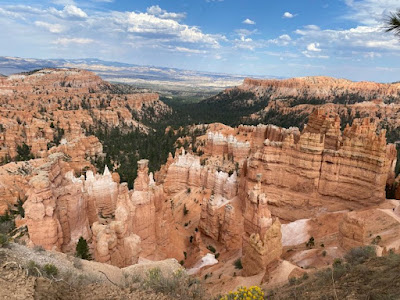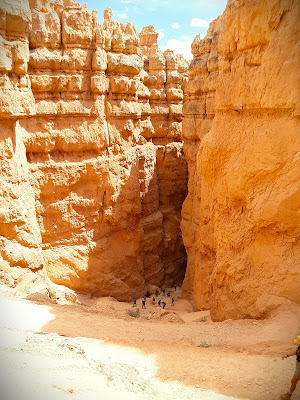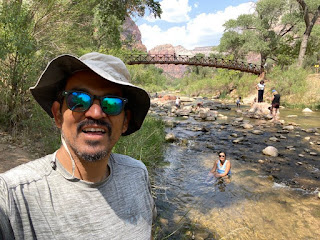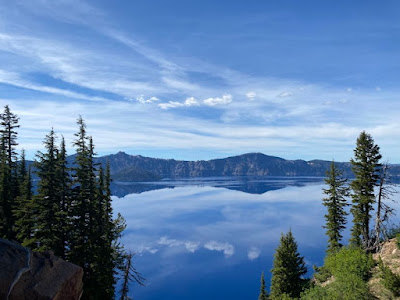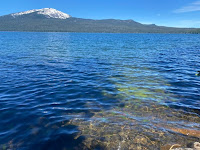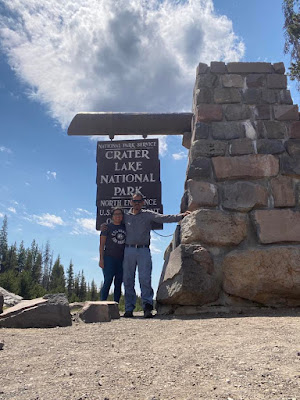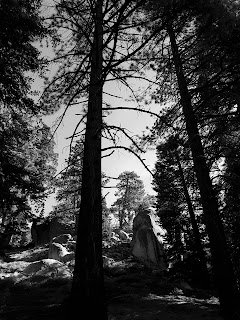Bryce Canyon National Park: A Hike into the Layers of Time and Mind
By Armando Ortiz
Bryce Canyon National Park lies on the Colorado Plateau of the Four Corners region of the United States. It is part of a geological area called the Escalante Grand Staircase. This area includes Zion National Park and to the south the Grand Canyon, making it quite remote but also unique in many ways. It's called a staircase because there are different layers of rock and sediment that can be seen from the highest to lowest point, making it a geologist and camper's paradise. In other words, this area’s varying layers of land are exposed and it's like seeing the different layers of a cake that are up to ten thousand feet tall. There are many things one can do in this area like stargaze, camp and hiking of varying difficulties. The highest points of this geological area are found in Bryce Canyon. Bryce Canyon in other words is at the edge of a plateau that is about nine thousand feet above sea level. This men
Hiking Bryce Canyon is a preternatural experience. You start your hike at the parking area where you can take several short hikes that follow the edge of Bryce Canyon. These trails offer lots of shade and you can admire the various pine trees that coexist. Hiking down into a canyon you feel like walking down into an orange amphitheater. Monsoon rains will highlight the scents of the trees and bushes as you enter this world. You will be greeted by a pine that has grown in between the clay walls. You’ll look up to see branches extended a few feet above you.
If you let your mind wander you begin to see things that weren’t there before. Kachina figures carved on the mountains seem to stand erect. Mud heads watching along the trail, waiting for you to get distracted. Bear scratches on the giant walls seemed to have been marked by an ancient species. Grottoes of unknown weathered buddhas seem to have been there for hundreds of years, weathered and sunbathed, still standing. Yet, one has to be reminded that we are walking on sacred land.
You start wondering if milarepa was mingling with Paiute shamans. These geological wonders were once places to rest. Its shade provides respite from the sun. Then suddenly a chipmunk races across and to the top causing these delicate walls to crumble. You notice mangled pine roots grabbing on to cliff sides. Their dark and gnarled limbs contrasting the red earth. You suddenly might find yourself in a shaded niche of sorts. A quiet location where the grinding of seeds and medicine took place. Maybe during vision quests the stars were studied from that spot. The spires seem to watch your every move. The sun, whether it be a cloudy day, is strong.
One feels like walking in a labyrinth of tangerine and white pinnacles. Pine tree branches bent, 4 shaped limbs marking the way. You pass through the ruins of a desert palace made of adobe orange and red clay. You begin to wonder if the story of hoodoos is real or not. We stop in between an entrance and rest our bodies from the sun in the cool shade. Take a sip of water, because there isn't any anywhere. The sun bears down on your body making your skin sticky and wet. If it wasn’t for the trail signs we’d be like rodents finding the exit.
Your mind begins to wonder if these earth formations are the ruins of the Anasazi. Entry ways lead you to other openings. Pathways that were once hallways are dead ends. These labyrinths make you dizzy. Maybe the ancients that committed sins are dwelling here and intend to get us lost. There is a pause in the hike, and we look up, the sky is a deep blue, and puffy white clouds indicate flash floods in the distance.
Faces carved by nature and time appear from out of nowhere. Suddenly one of the pillars seems to be wearing a white fedora. Rhinoceros horns make tops of the white fins that outline the ridges within the canyon. The image of the Virgin Mary appears eroded on the cliffs. Maybe it is time to pray to the gods. Your legs get shaky, but it's the heat and the dizzying hike. You follow the people ahead of you hoping they know the way. You wonder if cloud tears had created this site, millennia of thunderstorms passing through, feeding every nook and cranny with water.
Following the path down leads you to the smallest theater in the world, and from there you might discover a weathered diorama to one’s imagination. Maybe if you are lucky you might hear the old song dedicated to the sun. Focus on following the signs and keep track of the distance. When in doubt stand about under the shade, someone is bound to pass by. Again, water is essential on this trail, so take sips as you go. As you begin to reemerge from this mysterious place, turn around, and admire the vastness of the place. Once people called this place home, and found their way out just like we did. You return to the rim of the canyon, and you begin to see more greenery. Walk to your car and look back down at the canyon, you were just down there.
